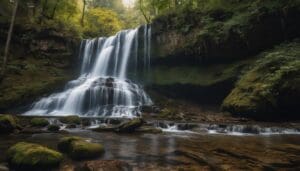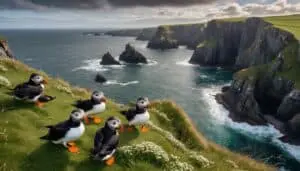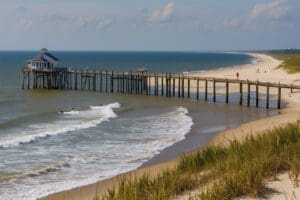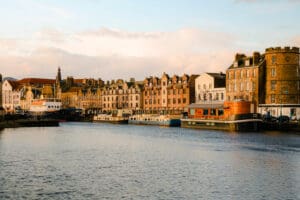Enniskillen Castle Museum, County Fermanagh
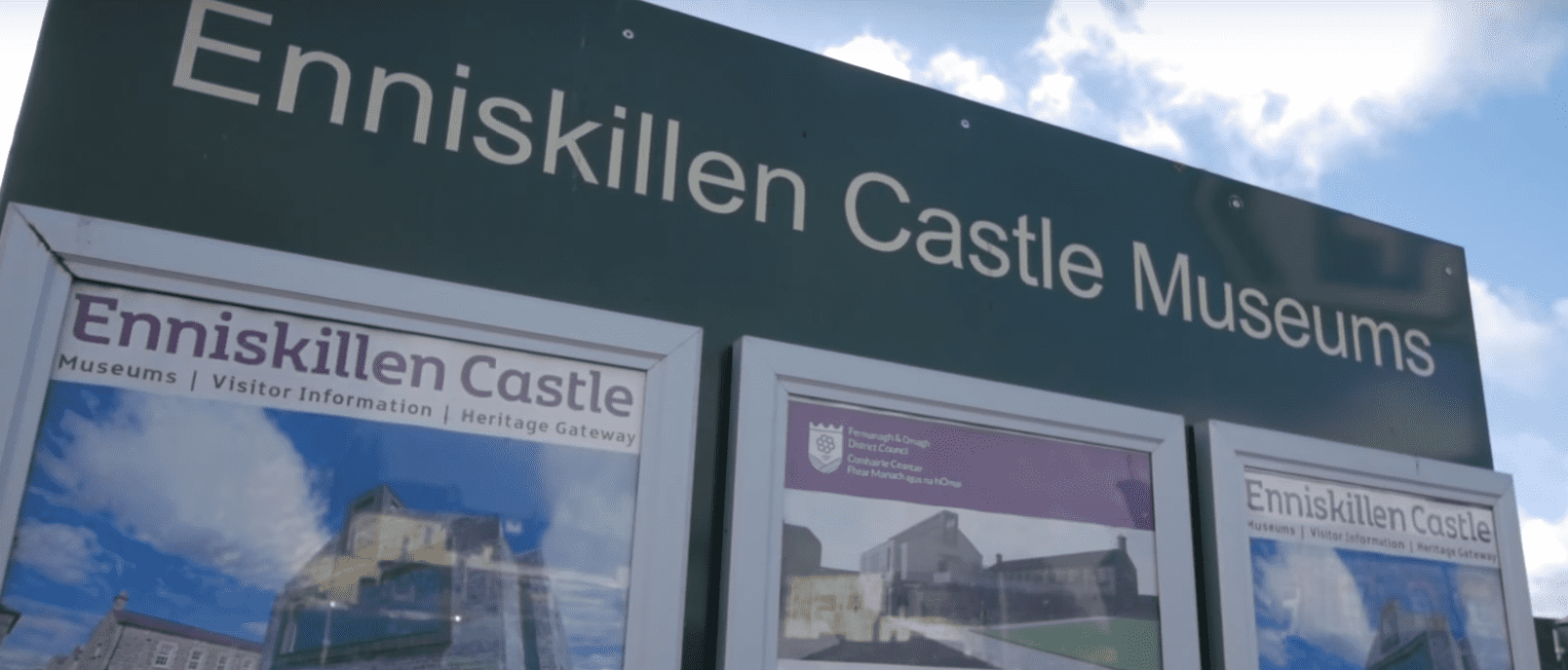
Updated On: April 07, 2024 by Noha Nabil
Enniskillen Castle has been a strategic historic site throughout the ages as a Castle guarding one of the principal passes into Ulster, the waters of Lough Erne and inside. The 600-year-old Enniskillen Castle is beside the River Erne, County Fermanagh, Northern Ireland.
The castle now houses the Fermanagh County Museum and the Regimental Museum of the Royal Inniskilling Fusiliers and is managed by the Northern Ireland Environment Agency. The site is promoted as ‘Enniskillen Castle Museums’, the gateway to discovering the region’s heritage.
Established in 1976 by the Fermanagh District Council, the Fermanagh County Museum is located within and around the Enniskillen Castle. It is a registered museum under the MLA Accreditation Scheme for museums in the United Kingdom. The Museum is rich with embedded stories of Fermanagh’s history, culture and environment and is always seeking to enlarge its collections to cover Fermanagh’s culture as much as possible.
As for the Inniskillings Museum, it holds the narratives of the town of Enniskillen’s two regiments: The Royal Inniskilling Fusiliers and the Fifth Royal Inniskilling Dragoon Guards. The Museum is within the Castle Keep and in the old cavalry stables. It displays a collection of uniforms, weapons, medals and memorabilia dating back to the 17th century, which tell the story of the regiments since their formation in 1689.
“There really is a lot to rave about here. The castle itself is in a very picturesque location but the collections regarding the second world war and the inniskillings fusiliers are fantastic for anyone interested in war memorabilia. If you are not there is a whole section on the main families of the area and I understand you can even attend a session to trace your roots, there is also an art gallery and an exhibition about the yesteryears (although that may have been temporary.) Lovely cafe, friendly staff and highly recommended. You are also right next to the main high street for a stroll or even along the lough. Definitely worth a day or two to explore”.
A Review on TripAdvisor
Castle History
Enniskillen Castle is the former seat of the Maguire Clan, the local significant chieftains who owned a private navy of 1,500 boats to patrol the waters of Upper and Lower Lough Erne. The Maguires came to power under their chieftain, Donn Maguire, who died in c. 1302 CE. They originally had a stronghold at Knockninny. Auley, Donn Maguire’s son, extended the rule of the Maguires to Lisnaskea, and there, the Maguire inauguration seat was established on the site of an ancient mound.
The Maguires were masters of art. Five unique chalices are ascribed to the Maguire chieftains and are now scattered all over the world from Scotland to Canada, the most famous of which is the Dunvegan Chalice, which dates back to 1493. This art piece takes the shape of a mether, an Irish drinking vessel, and we can see an inscription saying:
Katherina, daughter of Mac Rannal, wife of John Maguire, Prince of Fermanagh, caused me to be made in the year of the Lord, 1493—the eyes of all hope in Thee O Lord that Thou givest them bread in due season.
The Maguires also mastered poetry, music and learning. Among those poets was Tadhg Dall Ó hÚigínn, a blind poet who depicted Enniskillen Castle quite beautifully in a bardic poem titled Enniskillen; he versed in the late sixteenth century. It was a time when people enjoyed a peaceful tranquillity with poetic verses flying in the air. However, wars waged against the neighbouring clans of Counties Tyrone, Donegal and Cavan often interrupted that peace.
Enniskillen Poem
“Alas for him who looks on Enniskillen, with its glistening bays and melodious falls; it is perilous for us, since one cannot forsake it, to look upon the fair castle, with its shining sward.
Long ere ever I came to the white-walled rampart amongst the blue hillocks it seemed to me if I could reach that house I should lack nothing.
I heard, alas for me that heard it, such repute of the fairy castle of surpassing treasure, and how my beguilement was in store, that it was impossible to turn me back from it.
This was the saying of each man regarding the splendid dwelling of the lion of the Erne—no man in Babha ever saw a dwelling to equal it.
And they used to say moreover, whosoever should see the bending wood ot the verdant slope, the level beach or the green field, would not take one step away from it.
After hearing its description when I had slept for a while I beheld no other vision save the splendor of the noble spacious dwelling.
I proceed on my way, I reach Enniskillen of the overhanging oaks; through the fair plain of bending, fruit-laden stems I was in no wise loth to approach it.
Ere I arrived beside the place I was startled at the tumult; the baying of their lively hounds and their hunting-dogs driving deer from the wood for them.
The strand beside the court, on the fairy-like bay of murmuring streams, was crowded with such groves of tapering ship-masts that they concealed the beach and its waves.
Andhard by that enclosure I see a lovely plain of golden radiance, the moist-surfaced lawn of the bright-hued castle, the soil of Paradise, or else its very counterpart.
Thus did I find the green of the castle—upturned by the hooves of steeds; form the prancing of horses competing for triumph no herb flourishes in the soil of the outer yard.
The horses of the castle (were) running in contest, again I see them coursing one by one, until the surrounding hills were hidden, no mist upon them save an expanse of steeds.
I make directly for the coupled fortress of the branch of Lie; those whom I found in the fair mansion—a wondrous content of a mansion were they.
I found the nobles of the race of Colla in the thronged court distributing treasure, and those who exposed the recondities of the genealogy of the Grecian Gaels.
I found, moreover, throughout the fortress plenty of poets and minstrels, from one bright, white-surfaced wall to the other—happy the dwelling in which they find room!
In the other division I found plenty of slender-lipped, satin-clad maidens, weaving wondrous golden fringes in the sportive (?) rampart with fair, sleek hounds.
All through the house is an abundance of soldiery, reclining by the side walls; their edged weapons hanging above the fighters, warriors of fruitful Druim Caoin …
Precious treasures there were in that dwelling, which had not been theirs at the beginning of day: and hard by the place there were cattle which had not been near them the night before …”
The Maguire chieftains were known for their generosity as patrons of the Church, too. Their time witnessed prosperity for churches, and many churches were restored under their rule. They also donated church vessels, land and cattle for public welfare.
Enniskillen Castle witnessed a series of numerous attacks by Irish, English, and combined Irish and English forces:
- 1508 – Hugh O’Donnell attacks with a fleet of boats – takes the castle from Rory Maguire, and gives it to Philip Maguire.
- 1508 – Hugh O’Donnell returns and burns the castle to the ground.
- 1538 – Castle destroyed again, this time by O’Neill with a party of English and ordnance.
- 1594 – The English under Captain Dowdall is besieged by land, and they take it by water.
- 1595 – In May, Maguire besieges and returns to the castle.
- 1595 – In September, besieged by the English under Sir William Russell.
- 1596 – Maguire recaptures castle.
- 1602 – Cuchonnacht raised the castle to prevent the English from using it as a base.
- 1602 – Niall Garbh O’Donnell and a force of English complete the castle’s destruction.
In the early fifteenth century, Hugh ‘the Hospitable’ Maguire, one of the junior branches of the Maguires, established a stronghold at Enniskillen. Even though the construction date of Enniskillen Castle is not precisely determined, it must have been during the 1420s since Hugh ‘the Hospitable’ Maguire died in 1428 after he had returned to Ireland from pilgrimage in Spain.
In the early seventeenth century, Enniskillen Castle was taken by the English and rebuilt by Captain Willian Cole. The English secured the castle; the area became a staging post for the Plantation of Ulster. Through the development of Enniskillen, the castle played a strategic role in linen production and markets. However, the settlement remained an important military and port base.
Refurbishments
With a £3.5 million investment, the castle was restored and refurbished in 2007–2013. Now, it is open to the public where anyone can explore the Inniskillings Museum, Maguire Gallery and the original castle grounds, in addition to the many artefacts that are rich with stories about Ulster’s prehistoric era, the Plantation of Ulster and the vital contribution of the area during WWII.
2015, the refurbishments continued: four buildings within the complex were restored and refurbished. Due to Enniskillen Castle’s perfect location, a new magnificent visitor centre was constructed as part of the Fermanagh Heritage Gateway Project. The plan is to showcase the history of the Lakelands and highlight the other important attractions in the area.
“We were appointed in April 2014 and the construction / refurbishment work started on site in March 2015 after receiving Planning Approval and Listed Building Consent. The main build has recently been completed with the exhibit fit out due to commence very soon. The fit-out contractor will be on site for about 6 weeks and the museum is planned to re-open to the public in the summer”.
Mark Knight, Project Architect at Kriterion Conservation Architects
The refurbishments had to occur cautiously to avoid ruining any findings at the site. Accordingly, An archaeologist had to be on-site to monitor, record and photograph anything found during excavations.
“Conservation wise, we worked closely with NIEA when carrying out these construction works within this site containing listed buildings and a monument in state care. Due to the historic nature of the site, monitoring of any excavation on site was also extremely important. An archaeologist was on site to monitor, record and photograph any findings during excavations so it was challenging to keep the project moving forward within the construction programme … We were delighted to be involved in sensitively transforming this significant heritage asset into a world-class visitor facility which will protect and enrich our built and cultural heritage. Conservation of the iconic buildings and integration of the new visitor centre will give new long-term sustainable uses to the Enniskillen Castle Museums and enhance the region’s rich heritage and tourism offering”.
Mark Knight, Project Architect at Kriterion Conservation Architects
Castle Design
Enniskillen Castle is still impressive in terms of architectural design and construction. Added by William Cole during the Plantation period, you’d be amazed by the unique Scottish design of the twin turreted Watergate from the Sligo Road. It was described in 1611 as a ‘fair and strong wall’ twenty-six feet high, ‘newly erected’ with flankers, parapet and wall walk.
The name Watergate may sound misleading since there was no gate in the first place. However, inside the Watergate was a deep well, which served as an essential water source for the castle dwellers whenever besieged. Inside Watergate, there used to be a building of 2 storeys: a ground storey and one for the armoury.
We can find many other surviving buildings in the Castle yard: stables, a forge, a harness room, gunsheds, a granary and straw house, a wheeler’s shop and officers’ quarters.
Fermanagh County Museum
Fermanagh County Museum is located within Enniskillen Castle beside the River Erne. The Museum aims to preserve the history and culture of Fermanagh via exciting exhibitions and events. It displays a significant but relatively small art collection of oil paintings and other artworks.
The award-winning exhibitions cover Fermanagh’s prehistory and natural history, the county’s traditional rural life, local crafts, and the celebrated pottery at Belleek. However, the collection is consistently developed through purchases and donations offered by major funding institutes and the Museum Friends organisation. Fermanagh County Museum is open all year long. The Museum receives about 20,000 visitors annually.
“It’s the introduction point to the heritage of the county, so everything is under one roof making it very easy for everyone to discover more … The castle is here because of the water and the connection with the waterways. You can get views here you wouldn’t get anywhere else … (the new building) really opens up the castle site, signposting the wider heritage and making the link, making it connected to the rest of the landscape and the townscape … It wouldn’t have happened if people hadn’t donated or leant objects, and also the stories behind those objects”.
Sarah McHugh, Museum Manager
Fermanagh County Museum holds a set of 100 essential artefacts that tell the story of Fermanagh’s rich and diverse heritage. These artefacts date back several times, ranging between Prehistoric times and Modern times. They have national and international significance.
Moreover, the Museum holds a significant collection of works by the international Scottish artist William Scott (1913–1989), who was inspired by his teacher, Kathleen Bridle, who nurtured his dedication and enthusiasm. Much of the collection is displayed at the Full Circle Art Gallery. This virtual exhibition highlights the artist’s early life and initial inspiration, followed by a story of a family tragedy.
It finishes with the artist at the outset of his professional career.
Inniskillings Museum
The Inniskillings Museum’s mission is to engage and inspire everyone through its collections that tell various stories. It features a wide range of original uniforms, weaponry, silver, medals and regimental memorabilia, including 8 Victoria Crosses awarded during WWI.
It also holds the bugle that sounded the advance of the 36th (Ulster) Division at the opening of the Battle of the Somme on 1 July 1916. In addition, there are military vehicles, a Great War First Aid Station and a Dragoons Blacksmiths Shop within the former stables of the 18th-century Cavalry Barracks next to the Keep.
“Enniskillen Castle is one of the most important architectural and archaeological monuments in Northern Ireland and the fact that we have a derelict building at its entrance has always been a challenge … This project presents a wonderful opportunity to actually demolish what is an eyesore and create a state-of-the-art visitor centre and an obvious entrance, so that people know for a start how to get into the site and have a proper welcome from tourism, from genealogy and from heritage information services”.
Sarah McHugh, Museum Manager
Events
Enniskillen Castle Museums organise various events at different times of the year, exploring the exciting history and heritage of the site.
- Maguire History Weekend at Enniskillen Castle is an annual event with a varied program that takes you on a journey through the Maguire history of Fermanagh, from castles and chalices to important historical sites, food and family history information. The event includes 4 sessions for just £100.
- The Lough Erne Heritage Society held the Lough Erne Heritage Exhibition. The Society encourages research about Lough Erne and the construction of its traditional boats. The exhibition celebrates Erne’s unique and fascinating artefacts, history, traditions, and records of the people who are connected to its waterway.
- Festival Lough Erne celebrates Fermanagh’s finest food and the waterways at Enniskillen Castle. It will be held on Saturday, 22nd and Sunday, 23rd, September 2018.
- Culture Night 21 September 2018:
- Meet our museum muses 6 pm – 10 pm
- Poetry Reading, 8 pm – 9 pm
- Film – Screenings of the short film DUST
- Play With Clay, Ceramics Workshop 6 pm – 8 pm
- Celebrating Traveller Culture – Through The Lens Exhibition 6 pm – 10 pm
- Multi-Language Event, 6.30 pm – 10 pm Vietnamese, Polish, Irish, Ulster-Scots and Sign Language
Facilities
- Car Parking
- There are three entrances to the car park area:
- A footpath from the Car Park.
- A footpath from the Wellington Street Area.
- The pathway from the Broadmeadow Area.
- Drop kerbs are along the footpaths from the car park and Wellington Road.
- A raised crossing point from the Broadmeadow to the footpath along the main entrance is available for wheelchairs or mobility scooters.
- Reception
- The Reception Counter is to the right of the Main Foyer Area.
- The Reception Counter has a lowered-level area closest to the stairs.
- A hearing loop system is available.
- The café located past the stairs and Gift Shop area.
- Stairs to Visitor Centre 1st Floor
- A lift is available opposite the reception desk.
- Glass Room
- The Studio area can be used for meetings or activities.
- The room is accessed from the open area at the top of the stairs.
- Toilet Facilities
- Facilities for the Hard of Hearing
- A portable hearing loop system is available at the reception area. This allows customers to have the performance projected directly through their hearing aid.
- Facilities for the Visually Impaired
- Guide/Assistance Dogs are welcome in the building.
- If you are bringing a Guide/Assistance Dog, please let reception know so they can provide you with the best possible service.
- Personal Assistance Support Scheme (PASS)
- The PASS Scheme provides a complimentary ticket to a person for their companion, where that person would not be able to attend or use the services at Enniskillen Castle without that companion.
- The complimentary ticket can only be booked by phone or person, referencing your Scheme membership number.
- You can collect a registration form for this scheme from Reception or download it from the website.
Opening Times
- Monday to Friday (all year round): 9:30 am* – 5:00 pm
- Saturdays (all year round): 11:00 am – 5:00 pm
- Sundays (Jun to Sept): 11:00 am – 5:00 pm
- Bank Holidays – open on NI & ROI Bank Holidays from 9:30 am* – 5:00 pm
*9.30 am opening for new Visitor Centre and 10:00 am for museum galleries
Admission Charges
Admission into the Visitor Centre (Visitor Information Centre, Shop, Castle Café, Discovery Space, Fermanagh Genealogy Centre) is FREE.
Enniskillen Castle Museums ticket details:
- Adult: £5.00
- Child: £3.50
- Student/Senior Concession: £3.50
- Family (2 Adults + 3 Children): £13.50
Admission tickets get you into the two museums, Fermanagh County Museum and The Inniskillings Museum, and the historic site of Enniskillen Castle, known as Enniskillen Castle Museums. 80% of admission goes to Fermanagh & Omagh District Council, and 20% of general admission fees go to The Inniskillings Museum.
Contact Details
- Tel: +44 (0) 28 6632 5000
- Email: [email protected]
- Website: https://www.enniskillencastle.co.uk/
Have you ever visited the Enniskillen Castle Museum? Let us know in the comments below.
Other Great Museum Blogs by ConnollyCove: Trinity College Dublin | Headhunter Barber Shop and Railway Museum | Aquarium Museum – Alexandria, Egypt



